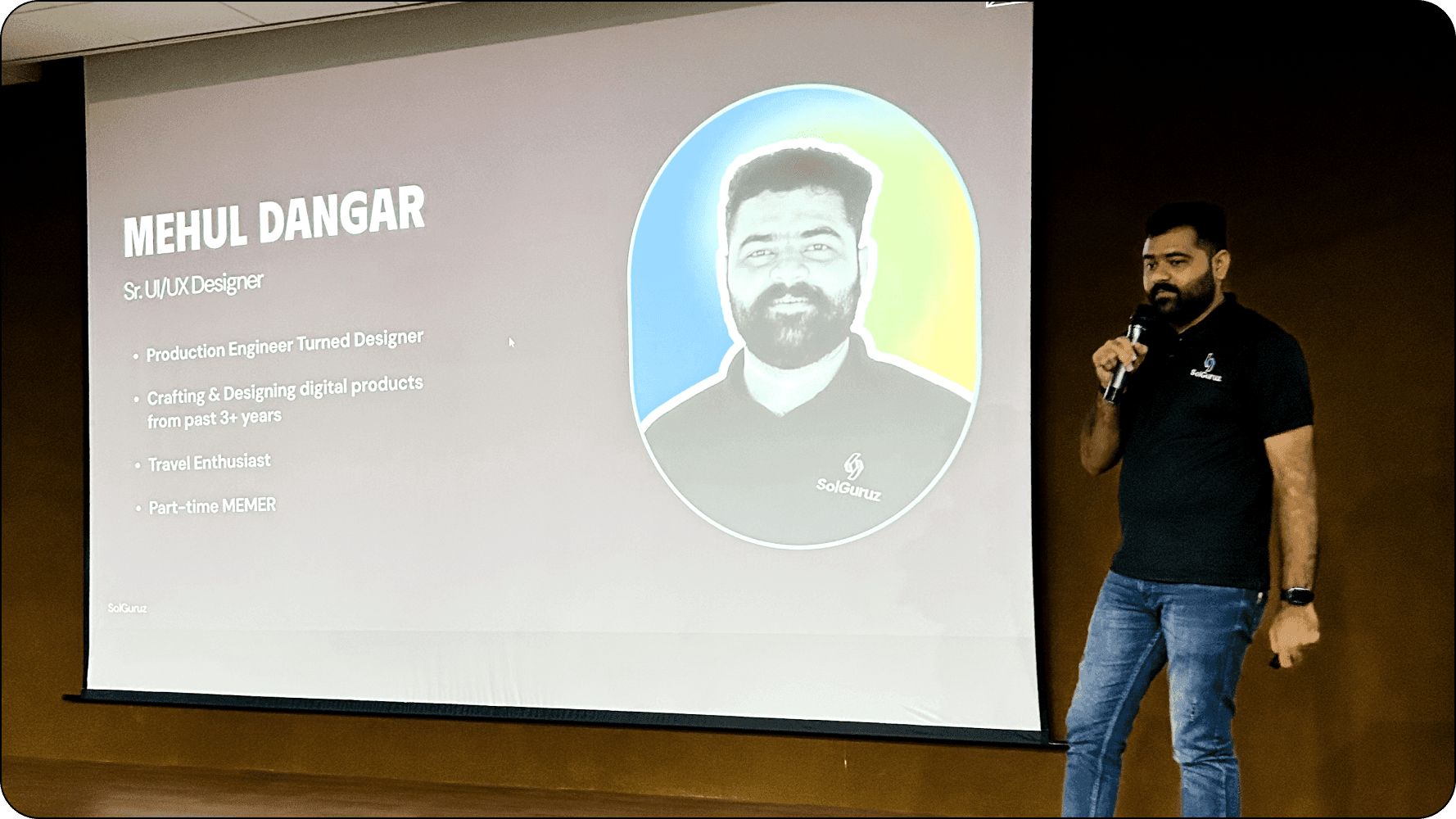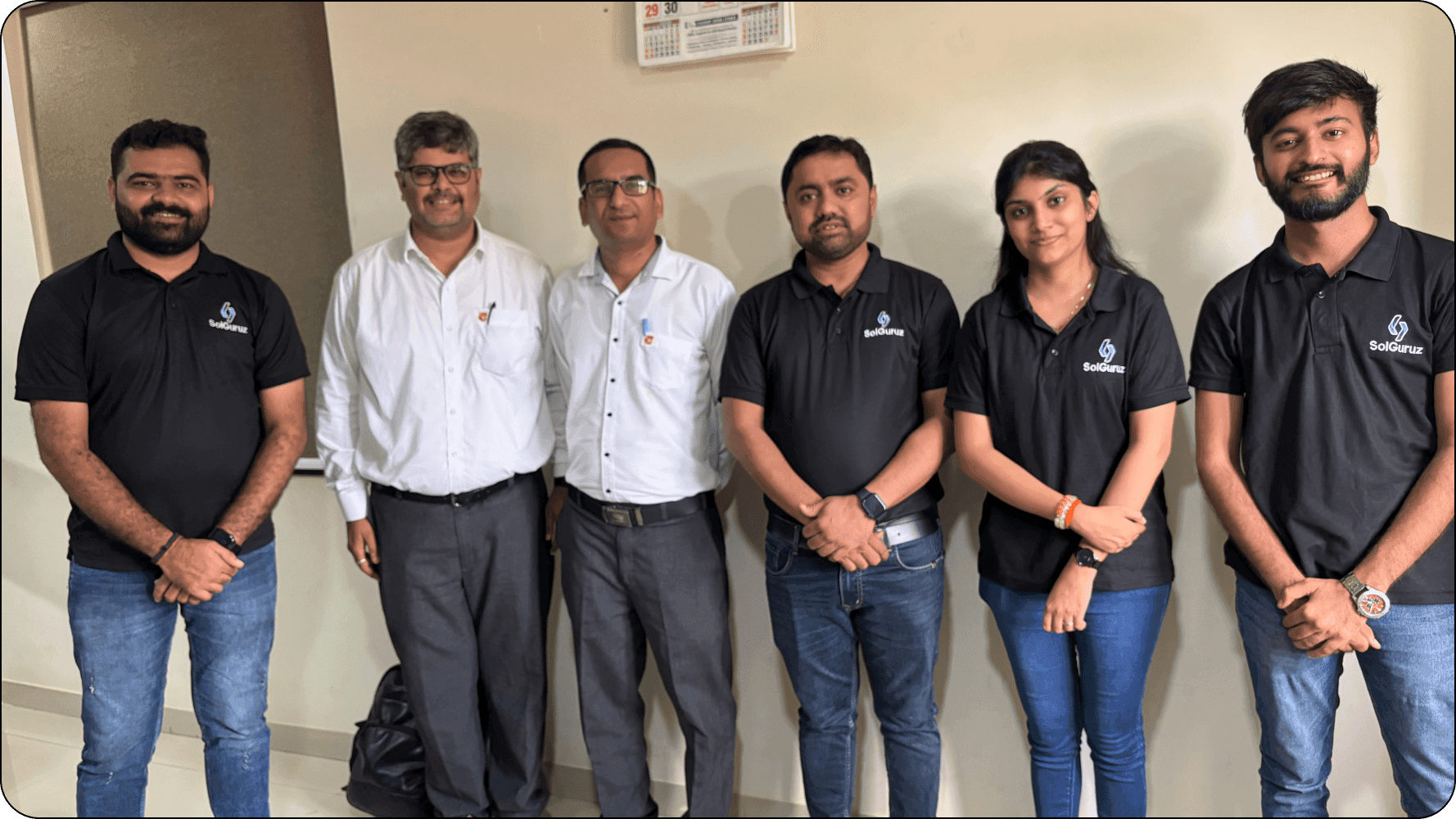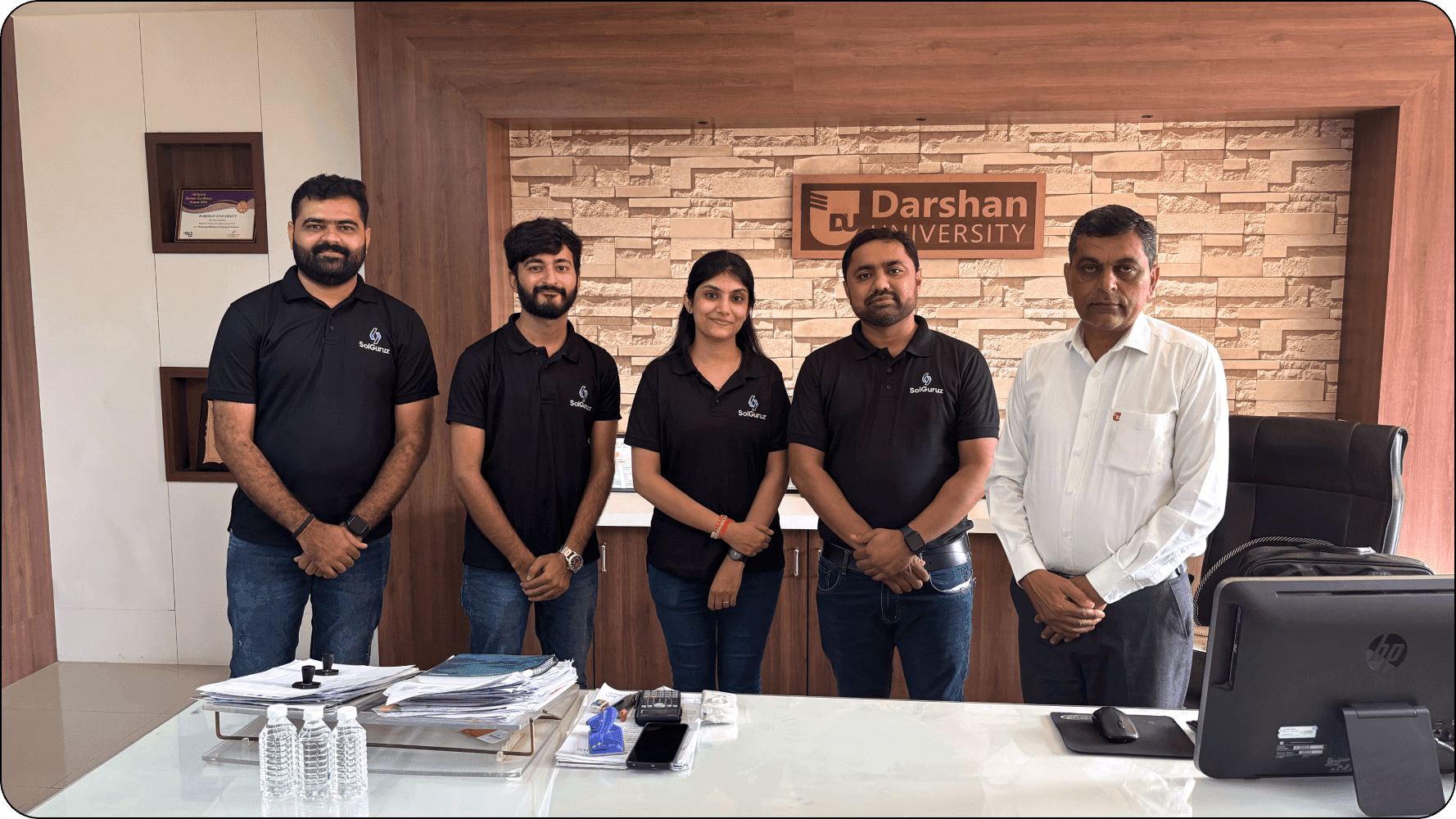Engineering Quality Solutions

In this session of community contribution, we were invited to Darshan University to deliver a talk on “Classroom to Career: UX/UI in Action”
This engaging session, led by SolGuruz's industry expert Paresh Mayani and senior members Shyam Badrakiya and Mehul Dangar from the design team went beyond the initial request of reviewing the university's B.Tech UI/UX curriculum.

Darshan University initially approached SolGuruz to examine their B.Tech UI/UX curriculum. Recognizing the opportunity to foster a more practical learning experience, SolGuruz also suggested scheduling an expert talk as well for the students. This allowed the team to present real-world industry insights and engage students in interactive discussions.

The SolGuruz team delivered a captivating presentation, diving into the latest trends and best practices in UI/UX design. The session wasn't just informative; it was interactive. Students actively participated, asking questions and expressing their design aspirations. This exchange created a vibrant learning environment and sparked a passion for UI/UX design among the attendees.

SolGuruz's talk aimed to bridge the gap between the educational curriculum and industry readiness of students in UI/UX design education. By showcasing real-life design challenges and solutions, the team equipped students with valuable insights that will serve them well in their future careers.
This collaborative event between SolGuruz and Darshan University was a resounding success. The interactive session not only inspired students. SolGuruz remains committed to fostering the next generation of UI/UX leaders. The talk focused on making university students aware of the needs of the industry and turning them into industry-ready individuals.

We extend our heartfelt thanks to Darshan University. Sincere gratitude to Mr. Mayur Padia for getting in touch with us regarding the curriculum revision, the general event schedule, and thoughtful hospitality.

We also had a chance to meet and gain insights on the industry readiness of the students with the Vice Chancellor Prof. Manish Sanghani.
If you attended the talk, share your experiences. Leave a comment or share ideas you have.
It is never too late to learn and share!
We are open to knowledge and ideas.
8 September 2024
01:00 PM
Darshan University, Rajkot
Don’t Just Dream Big - Let’s Make It Happen!
For over a decade, I’ve been at the forefront of turning bold, ambitious ideas into groundbreaking solutions. As the CEO of SolGuruz, I’ve had the privilege of helping startups and businesses not only tackle their biggest challenges but scale to new heights with products that don’t just compete - they dominate.
Every meeting with me isn’t just a conversation; it’s a launchpad for revolutionary ideas that can catapult into great products/services. Leaders who’ve taken the step to connect with me have walked away with actionable strategies that made their products unforgettable.
👉 Book a free strategy call with me now and experience the difference. This isn’t just advice - it’s the spark you need to ignite your next big breakthrough.
In a world full of ordinary, let’s create the AI-extraordinary.
Your moment is now - don’t let it pass by.
Paresh Mayani
CEO, SolGuruz
paresh@solguruz.us